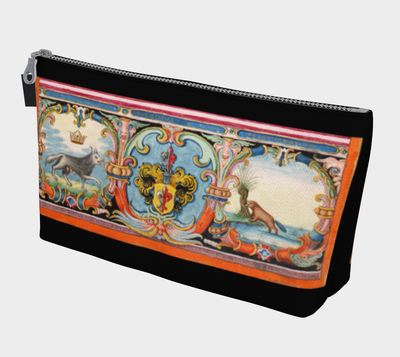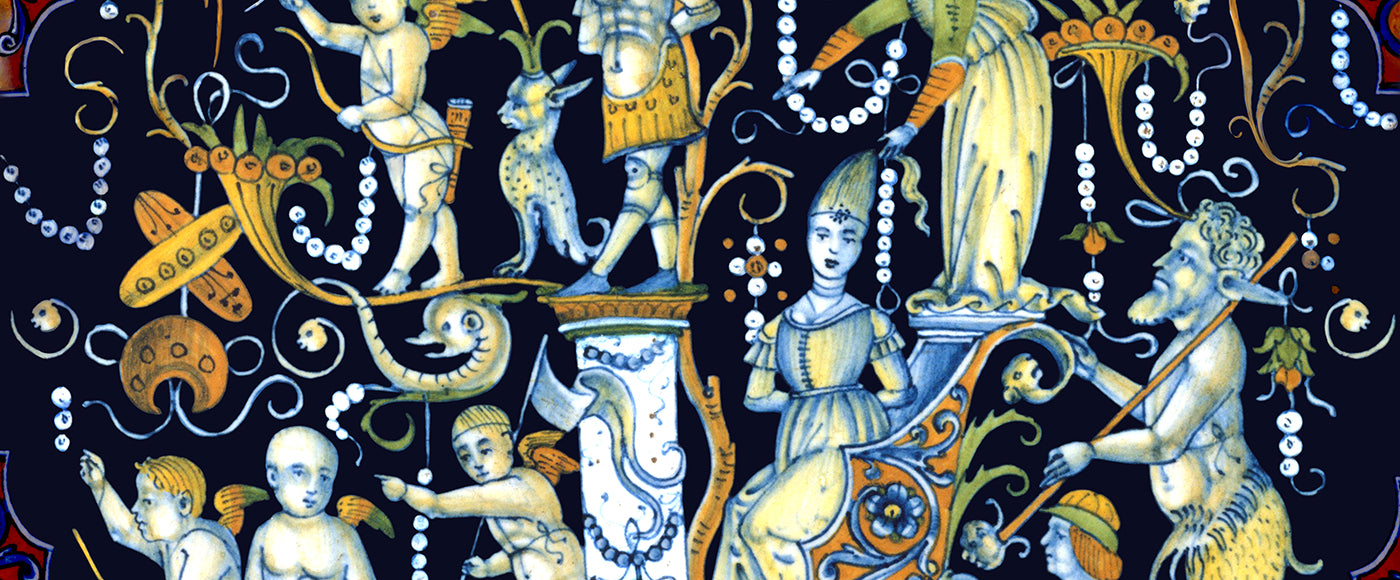First and only female pope, renowned scholar, and mother by accident. Pope Joan is one of the most controversial figures in history who has divided, for over one thousand years, scholars, writers, and the Catholic Church itself. Under normal circumstances, her story would be classified as a legend. But this one is different.
Her story cannot be easily discarded as fiction, as clues of her existence are scattered everywhere: in old parchment writings, artworks, and even a very unusual ritual once used in the Vatican involving a bizarre chair. On top of that, new evidence has recently uncovered a surprising clue.
Interestingly, our own research at MedievalMade has led to a medieval map, where we have been able to reconstruct her last scandalous journey. Read on for all the details!

A brilliant mind
Over 500 historical chronicles exist, each one providing their own version of Pope Joan's life. Despite the many differences, however, a common storyline emerges:
A woman disguised as a man rose through the ranks of the church and, due to her remarkable intelligence and talent, was eventually elected Pope. Her papacy lasted two years, during the Middle Ages, and ended when her sex was suddenly revealed during a procession, when she unexpectedly gave birth to a child.
The chronicles state that her birth name was Johannes Anglicus of Mainz, from the German town where she grew up. Even though there are no records of her family, we do know that during that period girls were not allowed to study. A woman showing a desire to read and learn was considered "unnatural" and downright wicked. Illiteracy was incredibly widespread also among men, as only nobles and clergy had access to education.
A plausible theory is that young Johannes got secondary exposure to education while her brother/s were learning. The only book she had likely access to was the Bible, and even in such circumstance, she must have read it secretly, as women were not considered worthy or capable of interpreting the sacred Scriptures.

The next detail about her life is reported by historian Polonus, who said she was "led to Athens dressed in the clothes of a man by a certain lover of hers."
How did such transformation happen?
Johannes, now a young woman, quickly outgrew the oppressive restrictions of her rural town, and it's also possible that her very life was in danger for being so different from every other woman. What is characterized in many accounts as "her lover," must have been a very educated man who recognized her talent and valued her intellect.
As strange as it sounds, cross-dressing was not uncommon during the Middle Ages. Some women dressed like men to access areas reserved to men, or to simply be safe during travels. It's worth noticing that during medieval times, crimes against property were punished more severely than crimes against the person, leaving women particularly exposed to predatory behaviors. Dressing like a man was simply the best insurance for all women who ventured out into the world.
Chronic malnutrition made sure that the female body resembled the male body, also considering that medieval attire was loose and never fitted (it will start becoming fitted during the late Middle Ages).
In Athens, Johannes became proficient in Greek and Latin, and a great variety of subjects, until she had no equal. Even in the knowledge of scriptures, no man could surpass her.
Upon returning to Rome, her lectures and disputations were attended by great masters, and she gained a high reputation in the city. She first became a secretary to the curia, then a cardinal, and finally Pope.
The scandal of the century

While Pope, Joan became pregnant by her companion. Once again, this was not a random man but her lifelong companion, the same man that had recognized her intelligence and had taken her away from Mainz all the way to Athens, and then had followed her back to Rome.
But Joan was ignorant about the exact time of birth, or perhaps she entered premature labor. During the infamous procession, she unexpectedly gave birth to a child, thus revealing her true identity of woman.
This is where the historical accounts differ the most, with some saying that she died of either natural causes or capital sentence; while other accounts report that she was confined to do many years of penance.
According to this second fate, her son eventually became Bishop of Ostia, and was able to protect his mother - and even order her burial inside the illustrious Ostia Cathedral when she died.
Her last journey
We did our own historical investigation and reconstructed Joan’s journey, uncovering an interesting detail.
This antique map shows the very road where the procession took place, “Via Sacra” or Sacred Road, right down from the Colosseum. This is what downtown Rome must have looked like at that time, with many of the same landmarks that we still recognize today.
The Sacred Road, highlighted in yellow, was the shortest way from St. Peter’s to the Lateran.

Allegedly, after the scandal this road was avoided by all future processions, to the point that it was known as the “shunned road” or the “Vicus Papissa” (the Street of the Woman Pope), and the longer path was used.
Still to this day, the only way to go from St. Peter’s to the Lateran is through the longer route, as we can see from this Google map.
It seems that the street architecture that developed overtime to our present day reflects this preference for the longer route, even in the absence of natural or architectonic barriers. This might be one still visible clue pointing to the existence of a female pope.

Fact or Fiction? More Clues

The most bizarre clue is a purple marble chair with a hole (known as sedes stercoraria or “dung chair”), where the pope-elect had to sit while a junior deacon performed an examination in front of all the cardinals.
If the inspection was passed, the cardinals announced, 'Testiculos habet et bene pendentes', “He has two testicles, and they dangle well.”
Apparently, this ritual was introduced to prevent any other woman from ever again becoming pope.
Scholars, however, are divided about this topic, many of them believing that such a chair had only symbolic meaning. In any case, the "stercory chair" was eliminated from the rite of investiture in 1560.

Another clue includes a bust of the female pope held in the Siena Cathedral until, in the 1600, the pope of the time decreed that the statue be destroyed. Apparently, the local archbishop decided instead to repurpose the statue, too good to go to waste, and her name was simply scraped off.
Despite all the clues, the problem has always been the exact time placements of Pope Joan, originally thought to be in the 9th century. Let’s remember that it was the Dark Ages and the lack of records created a lot of confusion, to the point that one Pope in the 11th century was even counted twice and the pope taking on the same name a couple centuries later, called himself John XXI - skipping the number XX that was instead the accurate one.
But perhaps the most fascinating clue appeared recently, with the discovery of silver coins bearing a monogram possibly belonging to Pope Johannes Anglicus. Archaeologist Michael Habicht of Flinders University, South Australia, thinks that these medieval coins “really turned the tables in favor of a covered-up but true story.”

(Image credit: Michael Habicht)
Conclusion
French historian Vallet de Viriville once wrote:
"Whenever you see a legend, you can be sure, if you go to the very bottom of things, that you will find history."
His words could not be truer when it comes to female Pope Joan, a story that has always sat somewhere between history and legend.
Pope Joan has divided for over one thousand years believers from non-believers. But the true meaning of this story, regardless of its historical veracity, is the paramount effort of a woman to gain knowledge. She was not reaching for equality but for knowledge; and through knowledge, she became not just equal: she became a myth.
Celebrating Johanna's spirit of resilience and determination means celebrating all women, an endeavor we embraced at MedievalMade through a unique design: The Woman Pope.










